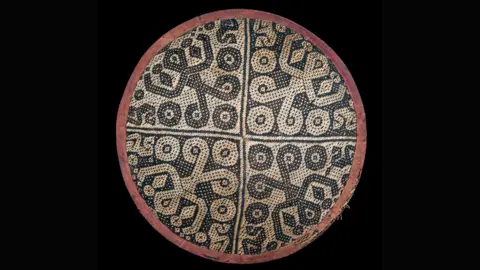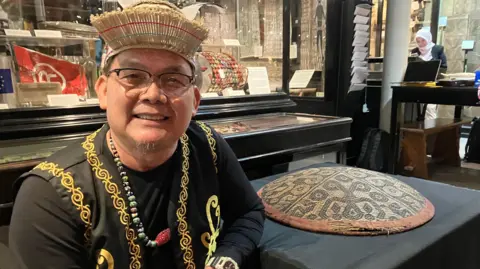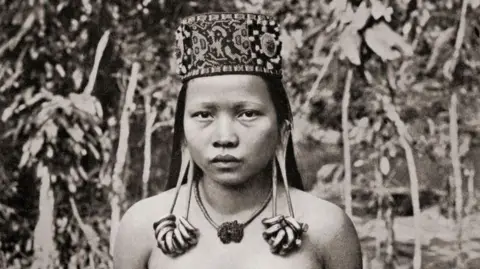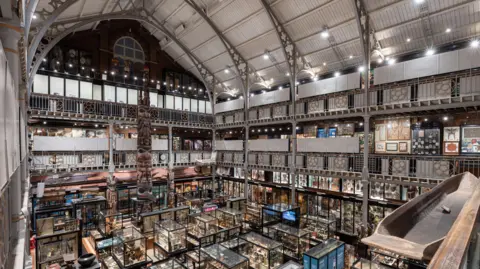
 Pitt Rivers Museum
Pitt Rivers MuseumA bamboo sunhat that was looted from an indigenous population by British colonisers is returning home.
The cultural artefact was taken from the Kenyah Badeng people of Sarawak, Borneo, during British-led war expeditions in 1895 and 1896.
It was acquired in 1923 by Pitt Rivers Museum in Oxford, although it has never been displayed.
The museum’s director, Prof Dr Laura Van Broekhoven, said she was “pleased the sunhat will be returning home”, having been “so violently taken”.
She said: “Given the history of parts of our collections and their entanglements in military violence and oppression, this work of redress is a crucial part of the work we want and need to do, as it helps to restore trust and understanding, and builds hope for a future of peace through partnership.”

A ceremony on Monday morning marked the first time the institution had returned a cultural item to an indigenous population, having only ever repatriated ancestral remains in the past.
“At the heart of our work lies caring for objects and people,” Prof Van Broekhoven said.
 Getty Images
Getty ImagesSarawak, which is part of modern-day Malaysia, was ruled as an independent monarchy by the British Brooke family between 1841 and 1941.
The family, known as the White Rajahs, regularly ordered war expeditions as a method of dealing with resistance from the regions’ indigenous populations.
 Pitt Rivers Museum
Pitt Rivers MuseumThese often included the massacring of women and children, the burning of longhouses and the looting of belongings.
They also resulted in thousands of deaths and the permanent displacement of people from their homeland.
The sunhat, made of woven bamboo with designs of human figures, would have served the dual function of providing physical and spiritual protection for a mother and her infant.
It is one of about 3,000 items from Borneo held by Pitt Rivers Museum, many of which were acquired from the Brooke family’s private collection in the early 1920s.
The ceremony marked the transfer of ownership to the Kenyah Badeng Association, where it will be exhibited at the Borneo Cultures Museum in Kuching – Sarawak’s largest city.
